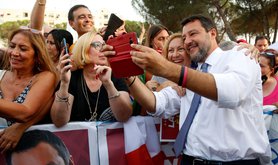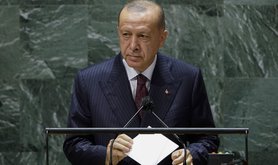The Covid-19 pandemic and physical distancing rules enacted by governments around the world have changed the way we act and present ourselves in public spaces. In order to protect ourselves and others we are far more likely to give each other a wide berth in the streets and stand two metres apart in queues. A further feature of this is the presence of face masks. More and more people are wearing them when they go out to cover their mouth and nose, and some countries have even mandated it in law.
In western Europe some have seen in this trend the unmasking (pun intended) of a deep hypocrisy: in contexts where Muslim women who wear the niqab have been vilified for covering their face in public, and such forms of dress banned in some places, the sudden social acceptability, even encouragement and good social manners of face covering highlights the nonsensical attitudes towards those forms of female Islamic dress. The idea that face coverings prevent effective communication, for instance, is being tested and found a little wanting. Indeed, it has been suggested that ‘we are all niqabis now’, thus pointing to a symmetry between the niqab and face masks belied by the apparent hypocrisy.
Yet, neither the hypocrisy nor the symmetry actually allow us to grasp what is at issue and it is questionable as to whether the prevalence of face masks might help spark a more constructive conversation on the niqab. This is because in addressing the question, ‘is a face mask used to help block coronavirus really that different from a niqab?’ a good deal of caution is also warranted. The reason for this caution is that the answer from both sides, that of the women wearing them along with that of people banning them, is ‘yes, it is’. To understand why, we need to grasp the logic of niqab wearing, face mask wearing, and niqab banning.
Arguments over its effectiveness aside, face mask wearing, whether voluntary or mandated by the state, is based on protecting people from the virus and thereby is one measure in helping secure the health of the nation. Wearing face masks in these extra-ordinary times is in a way seen as a profoundly social measure.
Niqab banning is also based on ‘protection’. To take one of the best-known examples, France brought in a ban on full face covering in 2011, the first European country to do so. Despite being technically indiscriminate, the ban is known as the ‘burqa ban’ as it is widely agreed to have been provoked by and targeted at the burqa and niqab. Justifications for the ban included positively promoting women’s liberty and equality, protecting public order, and ‘living together’.
When a challenge to the ban was brought before the European Court of Human Rights, the state’s defence was based on such coverings being “incompatible with the fundamental requirements of living together in French society” (the state won the case). That is, wearing these types of face coverings is seen as a profoundly anti-social act. It is on contravention of how ‘we’ come together in public spaces and marks out a cultural and religious ‘other’. This is why, for example, face masks are celebrated on French catwalks while niqabs are banned in public.







Comments
We encourage anyone to comment, please consult the oD commenting guidelines if you have any questions.